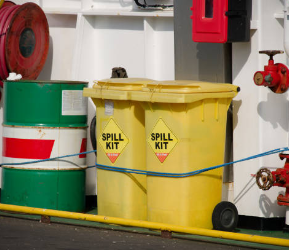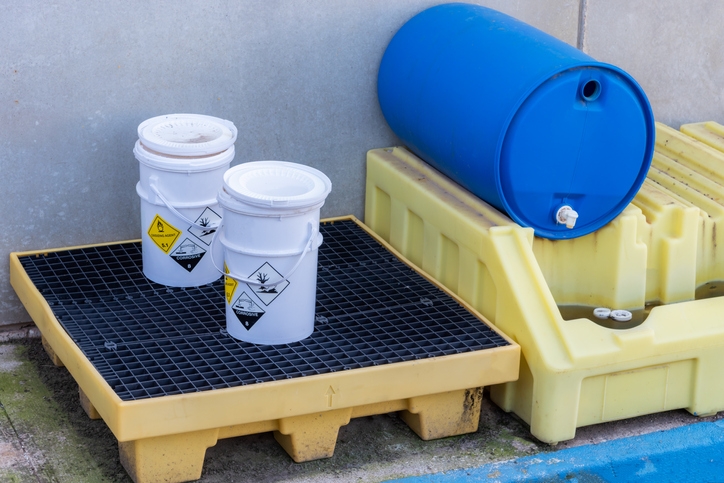Call Us: 1.800.275.3453
Request a QuoteCall Us: 1.800.275.3453
Request a QuoteIf you store hazardous materials and/or hazardous wastes at your facility, you need secondary containment systems to meet Environmental Protection Agency (EPA) or Occupational Safety and Health Administration (OSHA) regulations. Even though OSHA and EPA broadly define hazardous materials, consider any materials with a Safety Data Sheet (SDS) or liquids that harm a person or the environment as hazardous.

If your primary storage container–like a drum/barrel, IBC tote, or storage tank—fails, a secondary container is a precautionary system to prevent a spill from spreading. Any system, device, or control measure used to stop a discharge from leaving a specific area is considered secondary containment. For environmental, health and safety protection agencies, secondary containment helps to prevent harm by containing hazardous material spills.
You need secondary containment if you store regulated materials or materials that are:
Check the Federal CERCLA list and your state’s Critical Materials Register to find out if the materials you store are regulated. However, secondary containment is still recommended even if the materials you store aren’t mandated or regulated.
The Environmental Protect Agency’s (EPA) secondary containment requirements include the Spill Prevention Control and Countermeasures (SPCC) Rule, which aims to prevent illegal discharges of oil into navigable U.S. waters and adjoining shorelines. The SPCC rule requires facility owners or operators with significant aboveground or underground oil storage capacity to have a written plan detailing how the facility prevents oil spills to navigable waters and adjoining shorelines.
Secondary containment systems and spill containment systems come in a variety of configurations, sizes, and styles. Systems range from a simple shed to a complex underground vault system. A custom-built secondary containment system offers the right spill protection for specific facility or material needs.

Polystar Containment manufactures spill prevention and secondary containment units for a variety of industries. Contact us today to find out how we can help with your secondary containment and spill prevention setup.
View our Secondary Containment Products